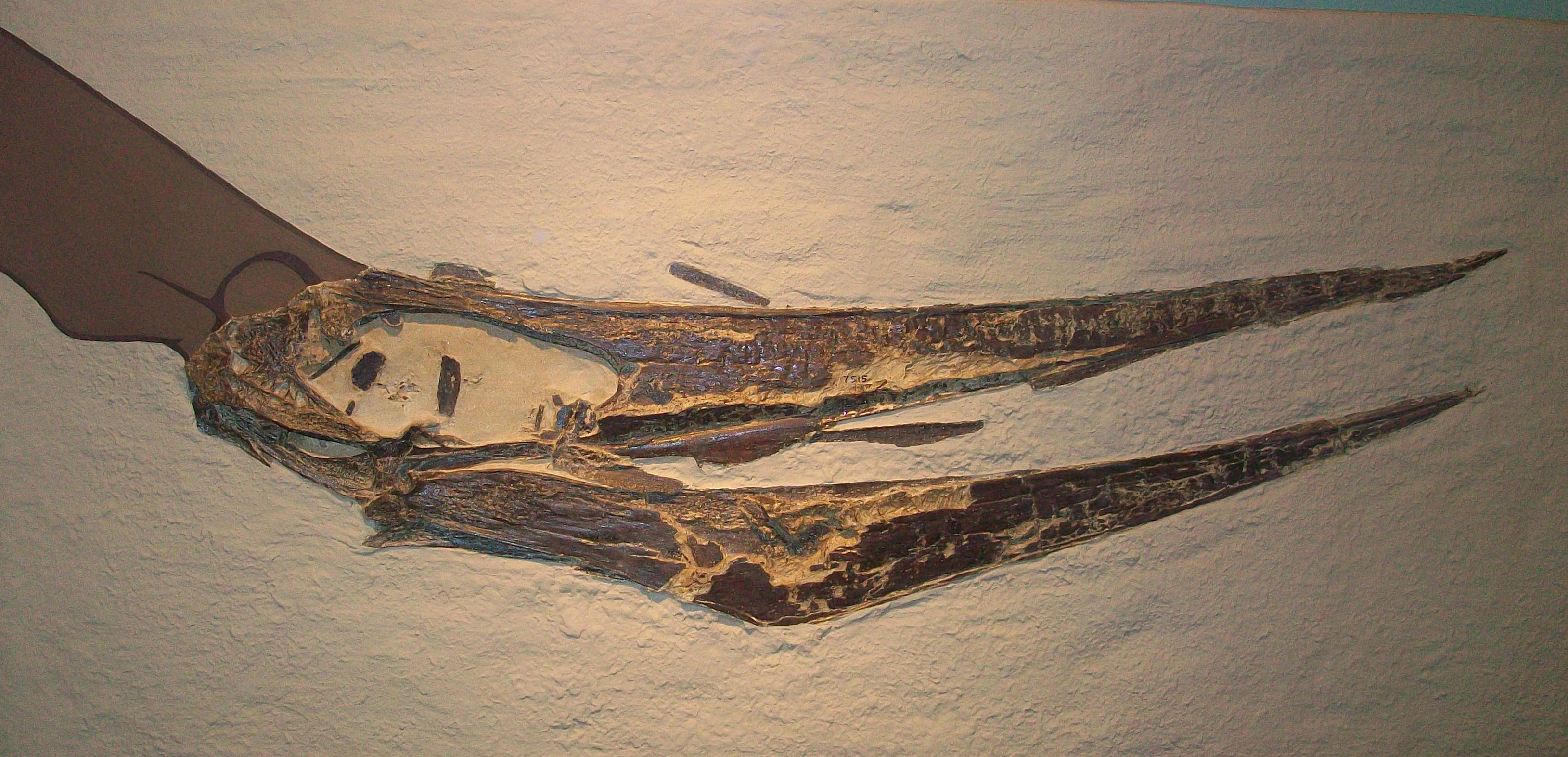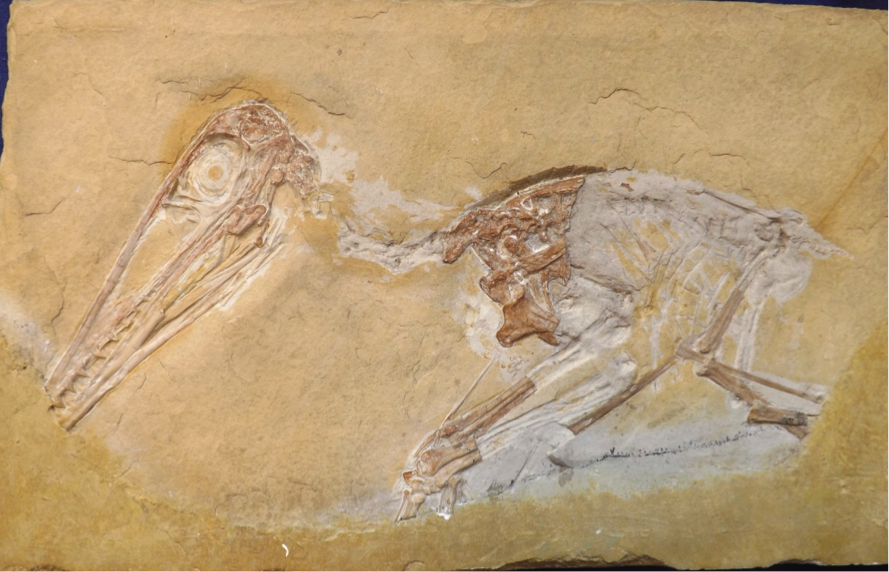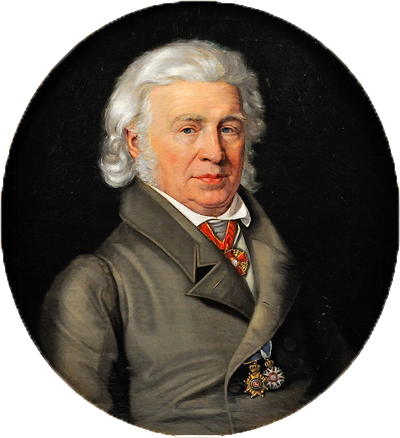|
Pterodactylus
''Pterodactylus'' (from Greek () meaning 'winged finger') is an extinct genus of pterosaurs. It is thought to contain only a single species, ''Pterodactylus antiquus'', which was the first pterosaur to be named and identified as a flying reptile. Fossil remains of ''Pterodactylus'' have primarily been found in the Solnhofen limestone of Bavaria, Germany, which dates from the Late Jurassic period (early Tithonian stage), about 150.8 to 148.5 million years ago. More fragmentary remains of ''Pterodactylus'' have tentatively been identified from elsewhere in Europe and in Africa. ''Pterodactylus'' was a generalist carnivore that probably fed on a variety of invertebrates and vertebrates. Like all pterosaurs, ''Pterodactylus'' had wings formed by a skin and muscle membrane stretching from its elongated fourth finger to its hind limbs. It was supported internally by collagen fibres and externally by keratinous ridges. ''Pterodactylus'' was a small pterosaur compared to other famo ... [...More Info...] [...Related Items...] OR: [Wikipedia] [Google] [Baidu] |
Rhamphorhynchus
''Rhamphorhynchus'' (, from Ancient Greek ''rhamphos'' meaning "beak" and ''rhynchus'' meaning "snout") is a genus of long-tailed pterosaurs in the Jurassic period. Less specialized than contemporary, short-tailed pterodactyloid pterosaurs such as ''Pterodactylus'', it had a long tail, stiffened with ligaments, which ended in a characteristic soft-tissue tail vane. The mouth of ''Rhamphorhynchus'' housed needle-like teeth, which were angled forward, with a curved, sharp, beak-like tip lacking teeth, indicating a diet mainly of fish; indeed, fish and cephalopod remains are frequently found in ''Rhamphorhynchus'' abdominal contents, as well as in their coprolites. Although fragmentary fossil remains possibly belonging to ''Rhamphorhynchus'' have been found in England, Tanzania, and Spain, the best preserved specimens come from the Solnhofen limestone of Bavaria, Germany. Many of these fossils preserve not only the bones but impressions of soft tissues, such as wing membranes. Scat ... [...More Info...] [...Related Items...] OR: [Wikipedia] [Google] [Baidu] |
Pteranodon
''Pteranodon'' (); from Ancient Greek (''pteron'', "wing") and (''anodon'', "toothless") is a genus of pterosaur that included some of the largest known flying reptiles, with ''P. longiceps'' having a wingspan of . They lived during the late Cretaceous geological period of North America in present-day Kansas, Nebraska, Wyoming, South Dakota and Alabama. More fossil specimens of ''Pteranodon'' have been found than any other pterosaur, with about 1,200 specimens known to science, many of them well preserved with nearly complete skulls and articulated skeletons. It was an important part of the animal community in the Western Interior Seaway. ''Pteranodon'' was not a dinosaur. By definition, all dinosaurs belong to the group Dinosauria; ''Pteranodon'' belongs to the group Pterosauria. Nonetheless, ''Pteranodon'' is the most famous pterosaur, frequently featured in dinosaur media and strongly associated with dinosaurs by the general public. While not dinosaurs, pterosaurs such as ' ... [...More Info...] [...Related Items...] OR: [Wikipedia] [Google] [Baidu] |
Pterosaur
Pterosaurs (; from Greek ''pteron'' and ''sauros'', meaning "wing lizard") is an extinct clade of flying reptiles in the order, Pterosauria. They existed during most of the Mesozoic: from the Late Triassic to the end of the Cretaceous (228 to 66 million years ago). Pterosaurs are the earliest vertebrates known to have evolved powered flight. Their wings were formed by a membrane of skin, muscle, and other tissues stretching from the ankles to a dramatically lengthened fourth finger. There were two major types of pterosaurs. Basal pterosaurs (also called 'non-pterodactyloid pterosaurs' or 'rhamphorhynchoids') were smaller animals with fully toothed jaws and, typically, long tails. Their wide wing membranes probably included and connected the hind legs. On the ground, they would have had an awkward sprawling posture, but the anatomy of their joints and strong claws would have made them effective climbers, and some may have even lived in trees. Basal pterosaurs were insectiv ... [...More Info...] [...Related Items...] OR: [Wikipedia] [Google] [Baidu] |
Pterosaur
Pterosaurs (; from Greek ''pteron'' and ''sauros'', meaning "wing lizard") is an extinct clade of flying reptiles in the order, Pterosauria. They existed during most of the Mesozoic: from the Late Triassic to the end of the Cretaceous (228 to 66 million years ago). Pterosaurs are the earliest vertebrates known to have evolved powered flight. Their wings were formed by a membrane of skin, muscle, and other tissues stretching from the ankles to a dramatically lengthened fourth finger. There were two major types of pterosaurs. Basal pterosaurs (also called 'non-pterodactyloid pterosaurs' or 'rhamphorhynchoids') were smaller animals with fully toothed jaws and, typically, long tails. Their wide wing membranes probably included and connected the hind legs. On the ground, they would have had an awkward sprawling posture, but the anatomy of their joints and strong claws would have made them effective climbers, and some may have even lived in trees. Basal pterosaurs were insectiv ... [...More Info...] [...Related Items...] OR: [Wikipedia] [Google] [Baidu] |
Diopecephalus
''Diopecephalus'' is a genus of pterodactyloid pterosaur from the Lower Tithonian (Upper Jurassic) of the Lithographic Limestone, Bavaria, Germany. The type and only species is ''D. kochi'', although the name has been applied to ''Pterodactylus longicollum'', with ''longicollum'' erroneously listed as the type species. Assigned species Like many pterosaurs, it has had a confusing taxonomic history, being given names by various authorities which identify it with four other genera: *''Pterodactylus longicollum'' (von Meyer 1854) *''Pterodactylus vulturinus'' (Wagner 1857) *''Pterodactylus longicollis'' (Wagner 1858) *''Pterodactylus suevicus'' (Fraas 1878) *''Cycnorhamphus fraasii'' (Seeley 1891) *''Pterodactylus frassi'' (Seeley 1901) *''Gallodactylus longicollum'' (Fabre 1974) *''Ornithocephalus longipes'' (Olshevsky 1978) (''Ornithocephalus'' is an obsolete name for ''Pterodactylus'') *''Ornithocephalus vulturinus'' (Olshevsky 1978) In 2017, Steven U. Vidovic and David M. Mart ... [...More Info...] [...Related Items...] OR: [Wikipedia] [Google] [Baidu] |
Aerodactylus
''Aerodactylus'' (meaning "wind finger") is a pterosaur genus containing a single species, ''Aerodactylus scolopaciceps'', previously regarded as a species of ''Pterodactylus''. The fossil remains of this species have been found only in the Solnhofen limestone of Bavaria, Germany, dated to the late Jurassic Period (early Tithonian), about 150.8–148.5 million years ago. Like all pterosaurs, the wings of ''Aerodactylus'' were formed by a skin and muscle membrane stretching from its elongated fourth finger to its hind limbs. It was supported internally by collagen fibres and externally by keratinous ridges. Several well preserved fossils have shown that ''Aerodactylus'' was covered in a short, dense coat of bristly pycnofibres, and that it had a rounded triangular crest on its head, as well as a backward-pointing lappet. It is named after the pterosaur-like Pokémon Aerodactyl. The validity of ''Aerodactylus'' has been disputed, with some pterosaur experts suggesting that none o ... [...More Info...] [...Related Items...] OR: [Wikipedia] [Google] [Baidu] |
Scaphognathus
''Scaphognathus'' was a pterosaur that lived around Germany during the Late Jurassic. It had a wingspan of 0.9 m (3 ft). Naming The first known ''Scaphognathus'' specimen was described in 1831 by August Goldfuss who mistook the tailless specimen for a new ''Pterodactylus'' species: ''P. crassirostris''. The specific name means "fat snout" in Latin. This specimen was an incomplete adult with a 0.9 m (3 ft) wingspan recovered from the Solnhofen strata near Eichstätt. In 1858 Johann Wagner referred the species to ''Rhamphorhynchus''. After recognising the fundamentally different snout shape, Wagner, after previous failed attempts by Leopold Fitzinger and Christoph Gottfried Andreas Giebel, who used preoccupied names, in 1861 named a distinct genus: ''Scaphognathus'', derived from Greek ''skaphe'', "boat" or "tub", and ''gnathos'', "jaw", in reference to the blunt shape of the lower jaws. In the early twentieth century, the "rhamphorhynchoid" nature of ''S. c ... [...More Info...] [...Related Items...] OR: [Wikipedia] [Google] [Baidu] |
Hermann Von Meyer
Christian Erich Hermann von Meyer (3 September 1801 – 2 April 1869), known as Hermann von Meyer, was a German palaeontologist. He was awarded the 1858 Wollaston medal by the Geological Society of London. Life He was born at Frankfurt am Main. In 1832, Meyer issued a work entitled ''Palaeologica'', and in course of time he published a series of memoirs on various fossil organic remains: molluscs, crustaceans, fishes and higher vertebrata, including the Triassic predator ''Teratosaurus'', the earliest bird ''Archaeopteryx lithographica'' (1861), the pterosaur ''Rhamphorhynchus'', and the prosauropod dinosaur ''Plateosaurus''. In ''Palaeologica'', Meyer proposed a classification of fossil reptiles into four major groups based on their limbs: *Saurians with Toes Similar to those of Living Species (e.g.'' Teleosaurus'', ''Protorosaurus'', '' Streptospondylus'') *Saurians with Limbs Similar to Heavy Land Mammals (''Iguanodon'', ''Megalosaurus'') *Saurians with Limbs for Swimm ... [...More Info...] [...Related Items...] OR: [Wikipedia] [Google] [Baidu] |
Georges Cuvier
Jean Léopold Nicolas Frédéric, Baron Cuvier (; 23 August 1769 – 13 May 1832), known as Georges Cuvier, was a French natural history, naturalist and zoology, zoologist, sometimes referred to as the "founding father of paleontology". Cuvier was a major figure in natural sciences research in the early 19th century and was instrumental in establishing the fields of comparative anatomy and paleontology through his work in comparing living animals with fossils. Cuvier's work is considered the foundation of vertebrate paleontology, and he expanded Linnaean taxonomy by grouping classes into phylum, phyla and incorporating both fossils and living species into the classification. Cuvier is also known for establishing extinction as a fact—at the time, extinction was considered by many of Cuvier's contemporaries to be merely controversial speculation. In his ''Essay on the Theory of the Earth'' (1813) Cuvier proposed that now-extinct species had been wiped out by periodic catastrophi ... [...More Info...] [...Related Items...] OR: [Wikipedia] [Google] [Baidu] |
Late Jurassic
The Late Jurassic is the third epoch of the Jurassic Period, and it spans the geologic time from 163.5 ± 1.0 to 145.0 ± 0.8 million years ago (Ma), which is preserved in Upper Jurassic strata.Owen 1987. In European lithostratigraphy, the name "Malm" indicates rocks of Late Jurassic age. In the past, ''Malm'' was also used to indicate the unit of geological time, but this usage is now discouraged to make a clear distinction between lithostratigraphic and geochronologic/chronostratigraphic units. Subdivisions The Late Jurassic is divided into three ages, which correspond with the three (faunal) stages of Upper Jurassic rock: Paleogeography During the Late Jurassic Epoch, Pangaea broke up into two supercontinents, Laurasia to the north, and Gondwana to the south. The result of this break-up was the spawning of the Atlantic Ocean. However, at this time, the Atlantic Ocean was relatively narrow. Life forms of the epoch This epoch is well known for many famous types of dinosau ... [...More Info...] [...Related Items...] OR: [Wikipedia] [Google] [Baidu] |
Samuel Thomas Von Sömmerring
Samuel Thomas von Sömmerring (28 January 1755 – 2 March 1830) was a German physician, anatomist, anthropologist, paleontologist and inventor. Sömmerring discovered the macula in the retina of the human eye. His investigations on the brain and the nervous system, on the sensory organs, on the embryo and its malformations, on the structure of the lungs, etc., made him one of the most important German anatomists. Career Sömmerring was born in Thorn (Toruń), Royal Prussia (a province of the Crown of Poland) as the ninth child of the physician Johann Thomas Sömmerring. In 1774 he completed his education in Thorn and began to study medicine at the University of Göttingen. He visited Petrus Camper lecturing at the University in Franeker. He became a professor of anatomy at the Collegium Carolinum (housed in the Ottoneum, now a Natural History Museum) in Kassel and, beginning in 1784, at the University of Mainz. There he was for five years the dean of the medical faculty. Aft ... [...More Info...] [...Related Items...] OR: [Wikipedia] [Google] [Baidu] |
Johann Andreas Wagner
Johann Andreas Wagner (21 March 1797 – 17 December 1861) was a German palaeontologist, zoologist and archaeologist who wrote several important works on palaeontology. Career Wagner was a professor at the University of Munich, and curator of the Zoologische Staatssammlung (State Zoology Collection). He was the author of ''Die Geographische Verbreitung der Säugethiere Dargestellt'' (1844–46). Wagner was a Christian creationist. Pikermi In his travels to the fossil beds of Pikermi, Wagner discovered and described fossil remains of mastodon, '' Dinotherium'', ''Hipparion ''Hipparion'' (Greek, "pony") is an extinct genus of horse that lived in North America, Asia, Europe, and Africa during the Miocene through Pleistocene ~23 Mya—781,000 years ago. It lived in non-forested, grassy plains, shortgrass prairie or ...'', two species of giraffe, antelope and others. His collaboration with Johannes Roth on these fossils became a major textbook in palaeontology, known as ... [...More Info...] [...Related Items...] OR: [Wikipedia] [Google] [Baidu] |










